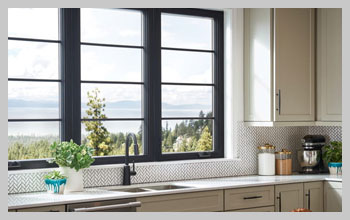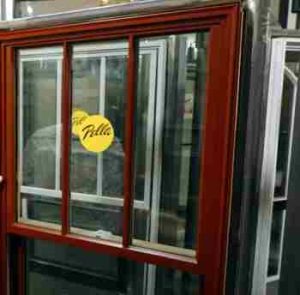We’ve all been there – standing in front of a plethora of window options, feeling overwhelmed, and wondering which brand to choose for our home. This article will help you make an informed decision by comparing two popular window brands: Sun Windows and Andersen Windows.
So, sit back, relax, and let’s dive into the world of Sun and Andersen Windows.
A Brief Comparison Table
| Criteria | Sun Windows | Andersen Windows |
| Materials | Vinyl and Aluminum | Wood, Vinyl, Fibrex® Composite |
| Energy Efficiency | Up to 40% reduction in bills | ENERGY STAR® certified |
| Aesthetic Appeal | Good range of colors & finishes | Wider selection of styles |
| Customization | Standard options available | More extensive customization |
| Price | Generally more affordable | Higher-end, pricier options |
| Availability | Limited nationwide presence | Wider availability |
| Maintenance | Low-maintenance materials | Wood may require more upkeep |
The Tale of Two Window Giants
Sun Windows, a family-owned business, has been crafting high-quality windows since 1930. on the other hand, Andersen Corporation, founded in 1903, is one of the most respected window brands.
Both companies are reputed and have a positive long history in the windows market. But, Which window company is best for your home? Let’s find out.
- Quality and Materials

When it comes to quality and materials, both Sun and Andersen Windows have a lot to offer.
Sun Windows uses a mix of vinyl and aluminum materials, while Andersen Windows primarily focuses on wood, vinyl, and Fibrex® composite materials.
Andersen’s Fibrex® composite material is known for its durability, energy efficiency, and low-maintenance properties.
One real-life example is Jane, a homeowner from Denver, who chose Andersen Windows because she wanted the classic look of wooden windows but didn’t want the maintenance associated with them. The Fibrex® material provided her with the best of both worlds.
Also Read: Differences Between Pella, Marvin And Andersen Windows.
- Energy Efficiency
Nowadays, energy efficiency is a major concern for most homeowners. In this regard, both Sun and Andersen Windows deliver.
Sun Windows offers energy-efficient glass packages that can reduce your energy bills by up to 40%, while Andersen Windows are ENERGY STAR® certified, which means they meet or exceed strict energy efficiency guidelines set by the U.S. Environmental Protection Agency.
Take the story of Bob, a homeowner from Phoenix, who chose Sun Windows for his home. He was amazed by the difference in his energy bills after the installation. He said, “My energy costs have significantly reduced, and my home feels much more comfortable.”
- Aesthetic Appeal and Customization
When it comes to the visual appeal and customization options, both Sun and Andersen Windows have a lot to offer. Sun Windows provides a range of colors and finishes, while Andersen Windows offers an even wider selection of styles, colors, hardware, and grille patterns.
Imagine you’re Lisa, a homeowner from Chicago, who was looking for windows that would match her 19th-century Victorian home. She opted for Andersen Windows because of its extensive customization options, which allowed her to maintain the historical charm of her home.
- Price and Value
Price is always a major factor when choosing windows. Sun Windows tend to be more affordable than Andersen Windows, but the latter offers higher-end products with more customization options.
It’s essential to weigh your budget against the features you desire to make the right choice.
Drawbacks of Sun and Andersen Windows

While both Sun and Andersen Windows have numerous advantages, there are some drawbacks to consider as well:
- Price: Andersen Windows can be more expensive than Sun Windows, especially for customized products. Budget-conscious homeowners may reject this.
- Availability: Sun Windows is a smaller company and may not have the same availability or nationwide presence as Andersen Windows. This could affect shipping times and local dealer options.
- Maintenance: Although Andersen’s Fibrex® material is low-maintenance, their wooden windows may require more upkeep over time compared to Sun Windows’ vinyl and aluminum offerings. This can be an issue to take into account if you’re not ready to devote time and effort to keeping wooden windows.
Also Read: Reasons Why Pella Power Symphony Windows Are So Popular.
Frequently Asked Questions (FAQ)
Some other popular window brands that offer comparable products to Andersen include Pella, Marvin, and Milgard. These companies provide a wide range of window styles, materials, and energy efficiency features, making them worthy competitors.
The “best” windows will vary according to your specific requirements, preferences, and budget; therefore, there is no universally applicable answer to this query. Both Sun and Andersen Windows offer high-quality, energy-efficient products with different features, so it’s essential to evaluate your requirements and compare them to what each brand offers.
While Sun Windows are generally more affordable than Andersen Windows, the most cost-effective windows depend on various factors such as energy efficiency, maintenance, and longevity. Higher-quality windows with improved insulation and energy efficiency may save you money over time.
Sun Windows is a family-owned and operated business, founded in 1930 by Victor H. Anderson. Even now, the business is still family-owned and has a strong focus on quality and client happiness.
Fiberglass and composite windows, such as Andersen’s Fibrex® material, are known for their durability and longevity. These materials resist rot, decay, and warping, providing excellent performance for years to come. Regardless of the material, it’s vital to keep in mind that correct installation and maintenance are quite important in deciding the lifespan of your windows.
The Bottom Line
The decision between Sun Windows and Andersen Windows ultimately comes down to your individual needs, preferences, and budget. Both brands offer high-quality, energy-efficient products, but Andersen Windows provides a wider range of customization options at a higher price point.
Before making the final decision, weigh each brand’s merits and cons and analyze real-life instances and other users’ experiences. Happy window shopping!



